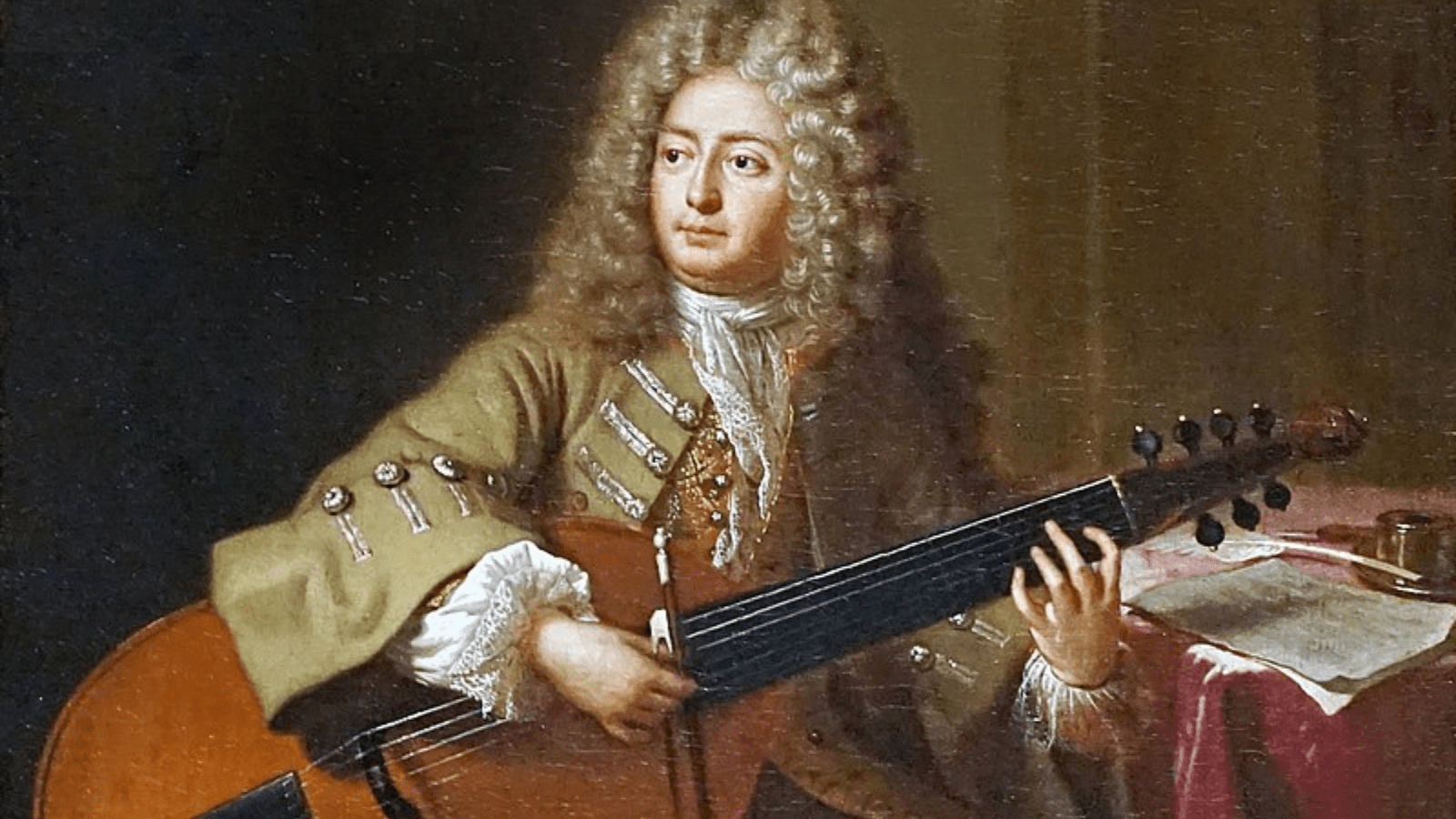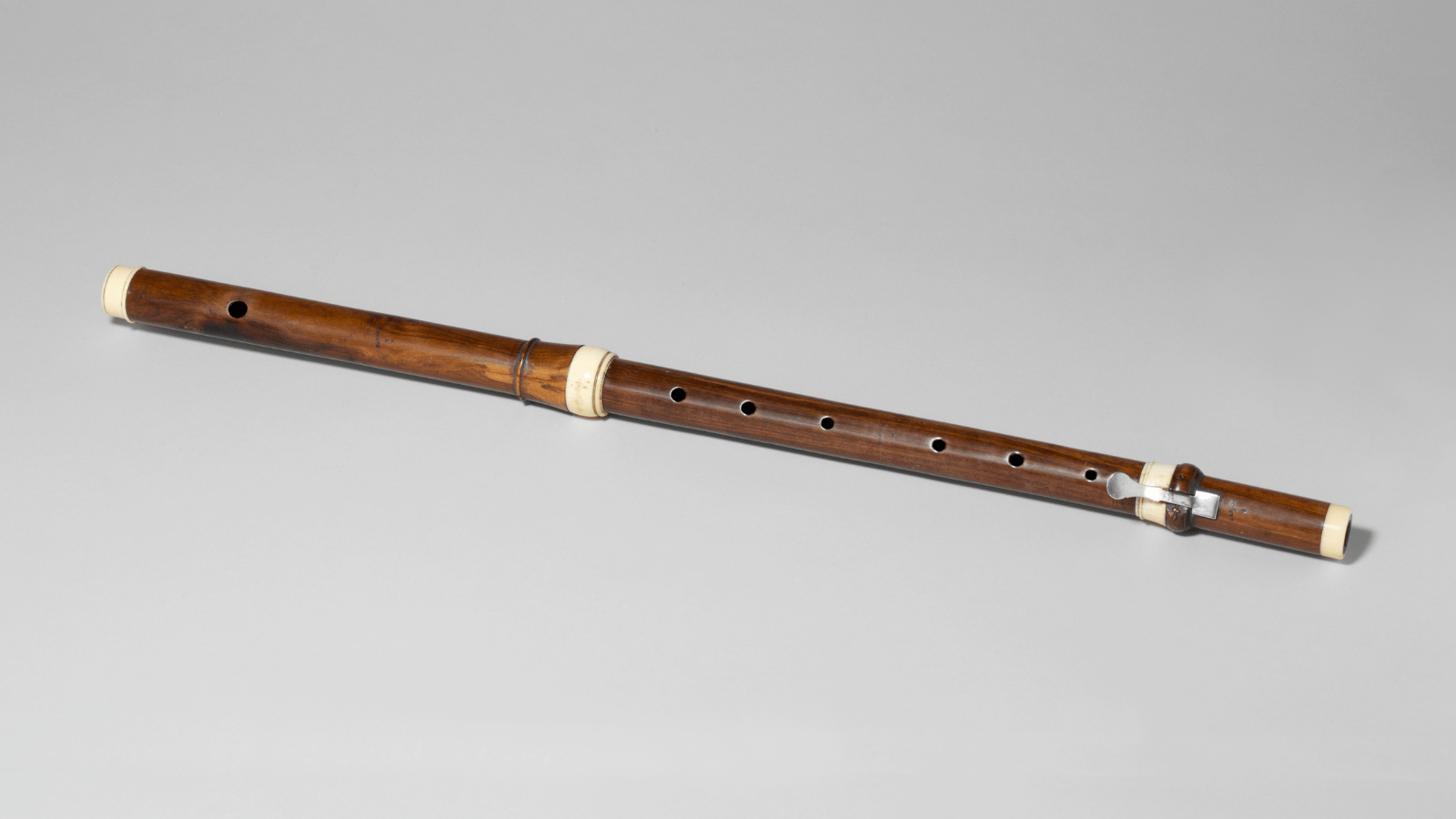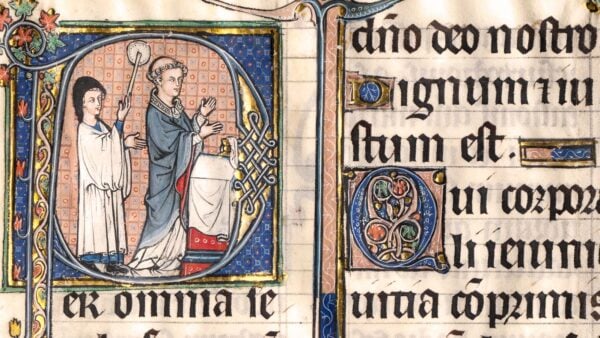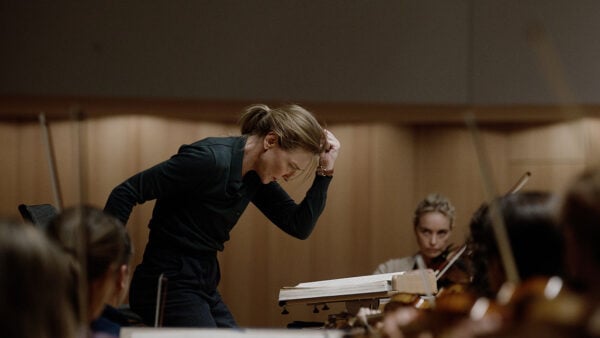
Portrait de Marin Marais, 1704. (Photo : Workshop of André Bouys, CC BY 2.0, via Wikimedia Commons)
On a February 2023 morning in Paris, Michael Lynn stumbled across an early-music treasure.
Listed among the books, paintings, and pieces of furniture being listed at a Drouot auction was a 600-page collection of early flute music from the court of Louis XIV.
In comparison to other items, mention of the folio was spare. And as such, few music professionals were in the audience. Yet, Lynn was intrigued. The professor of historical flutes and recorder at Oberlin Conservatory bid on the book out of professional curiosity.
Upon closer inspection, Lynn realized that this item held a lot of significance for early music enthusiasts. Contained within were many notable materials, including six published opuses by Michel de La Barre, the first flute book of Jacques-Martin Hotteterre, and the symphonies of Pierre Gautier de Marseille. But what really got the attention of Professor Lynn was a series of works arranged for flute and bass viol duets by French composer Marin Marais.

Picture of a transverse flute circa 1720-1740. (Photo: “The Metropolitan Museum of Art, New York”, Purchase, Robert Alonzo Lehman Bequest, 2005)
In an essay published in Early Music America, Lynn described the discovery as “a stunning find.” Works by Marais for flute and continuo had been assumed to be nonexistent up until this point. Marais, a viol player, was best known for writing five books of music for the viola da gamba. His only notable contribution to flute music previously had been Pièce en Trio, a chamber music piece published in 1692 that was one of the first works to include the transverse flute.
This particular collection of Marin flute pieces was labeled as “various pieces taken in particular from the 2nd book of pieces for viols (1701) including Voix Humaines, a Muzette, La Gratieuse.” Further examination by Professor Lynn revealed that many of the pieces were not just arrangements of Marais’ second volume of viol music, but new music altogether. The book contains 70 movements by Marais with a foreword that indicates the composer tested his works specifically on the violin and “German flute.” Sprinkled throughout the works are pieces for flute duo as well.
Michael Lynn suggested the pieces represent the biggest discovery in flute repertoire in a quarter-century, since the discovery of the Georg Philipp Telemann duets TWV40: 141-149 in 1999. Work is currently being done to publish these works and make them available to a wider audience.






